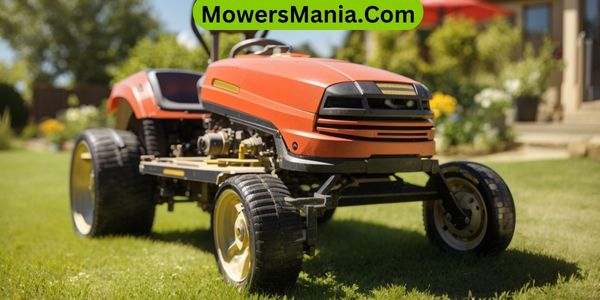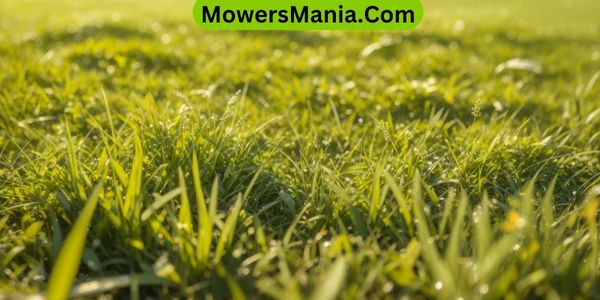Are you tired of dealing with pesky lawn diseases during the summer? Look no further!
This comprehensive guide is here to help you prevent and combat those troublesome issues. Learn how to identify common lawn diseases, understand their causes, and implement proper maintenance practices to keep your lawn healthy.

With the right grass varieties, effective weed control methods, and proper watering techniques, you’ll be able to enjoy a disease-free lawn all summer long.
Identifying Common Summer Lawn Diseases
You often encounter common summer lawn diseases, so it’s important to know how to identify them. By being able to recognize these diseases early on, you can take the necessary steps to prevent them from spreading and causing further damage to your lawn.
One common summer lawn disease is brown patch. It appears as circular patches of brown, dead grass that can range in size from a few inches to several feet in diameter.
Another common disease is dollar spot, which causes small, silver dollar-sized patches of dead grass.
Rust is another disease to watch out for. It presents itself as an orange or yellowish powder on the grass blades.
If you notice irregular, discolored patches on your lawn that turn grayish-white or pink, you may be dealing with a disease called powdery mildew.
Lastly, if your grass develops thin, straw-colored patches that grow and eventually merge together, you may have a disease called summer patch.
Understanding the Causes of Lawn Diseases
Now let’s take a closer look at the causes of lawn diseases. Understanding common disease triggers is key to prevention.
In this section, we’ll explain various strategies to help you protect your lawn from these issues.
Common Disease Triggers
Understanding the causes of lawn diseases begins with identifying common disease triggers. By knowing what factors can contribute to the development of lawn diseases, you can take proactive steps to prevent them from occurring in the first place.
One common trigger is excessive moisture. Overwatering your lawn can create a damp environment that’s conducive to disease growth. Poor drainage can also lead to standing water, which promotes the growth of fungi and other pathogens.
Another trigger is improper mowing. Cutting your grass too short can weaken it and make it more susceptible to disease. Additionally, using dull blades can result in ragged cuts that leave the grass vulnerable to infections.
Prevention Strategies Explained
To effectively prevent lawn diseases, it’s important to understand the causes and implement appropriate prevention strategies.
Lawn diseases can be caused by a variety of factors, including weather conditions, improper lawn care practices, and the presence of pathogens. One of the most common causes of lawn diseases is excessive moisture, which creates a favorable environment for fungal growth.
To prevent this, make sure to water your lawn in the early morning hours to allow it to dry out during the day.
Another important prevention strategy is to practice good lawn maintenance, such as regular mowing and proper fertilization. This helps to keep your lawn healthy and less susceptible to diseases.
Additionally, it’s crucial to monitor your lawn for any signs of disease and take prompt action to address them, such as using fungicides if necessary.
Implementing Proper Lawn Maintenance Practices

To maintain a healthy lawn and prevent summer diseases, it’s important to pay attention to mowing height and frequency.
Keep your grass at a recommended height of 2.5 to 3 inches and avoid cutting more than one-third of the blade length at a time.
Additionally, water your lawn deeply and infrequently, providing about 1 inch of water per week to encourage deep root growth and discourage disease development.
Mowing Height and Frequency
Maintain a healthy lawn by mowing at the appropriate height and frequency. This ensures that your grass stays strong and resilient, preventing the growth of disease-causing organisms.
Here are some important tips to help you achieve the best mowing practices:
- Mowing Height:
- Set your mower blades at the recommended height for your specific grass type. This will promote root growth and discourage weed growth.
- Avoid cutting your grass too short, as this can weaken the plants and make them more susceptible to diseases and pests.
- Mowing Frequency:
- Regularly mow your lawn to prevent the grass from becoming too tall and dense, which can create a favorable environment for diseases.
- Adjust your mowing frequency based on the growth rate of your grass. During periods of rapid growth, you may need to mow more often.
Watering Techniques for Lawns
Implement proper watering techniques for your lawn to ensure healthy and disease-resistant grass.
Watering your lawn correctly is crucial to maintaining its overall health and preventing the onset of diseases.
To begin, water your lawn deeply and infrequently. This allows the water to penetrate the soil and reach the roots, promoting a strong and deep root system. Avoid shallow watering, as it encourages shallow root growth, making your lawn more susceptible to diseases.
Additionally, water your lawn early in the morning. This allows the grass to dry before evening, reducing the risk of fungal diseases.
Finally, consider using a sprinkler system or a soaker hose to ensure even water distribution across your lawn.
Choosing the Right Grass Varieties for Disease Resistance
When selecting grass varieties for disease resistance, consider using those that are known for their ability to withstand common summer lawn diseases.
Choosing the right grass varieties can make a significant difference in the health and appearance of your lawn during the summer months. Here are some factors to consider when making your selection:
- Disease resistance: Look for grass varieties that have been specifically bred or developed to be resistant to common summer lawn diseases. These varieties are more likely to stay healthy and vibrant even in challenging conditions.
- Climate suitability: Different grass varieties thrive in different climates. Make sure to choose a variety that’s well-suited to your specific region, as this will increase its chances of staying disease-free during the summer.
- Maintenance requirements: Some grass varieties require more maintenance than others. Consider how much time and effort you’re willing to invest in lawn care and choose a variety that fits your lifestyle. Low-maintenance varieties are often more resistant to diseases because they require less water and fertilizer.
Utilizing Effective Weed Control Methods
Ensure the effectiveness of your weed control methods to keep your lawn free from unwanted growth. Weeds can quickly take over your lawn, competing with your grass for nutrients, sunlight, and water.
To effectively control weeds, it’s important to implement a comprehensive approach that combines both preventive and reactive measures.
Start by regularly mowing your lawn at the appropriate height for your specific grass type. This helps to promote healthy turf growth and prevents weeds from establishing themselves.
Additionally, consider using pre-emergent herbicides to create a barrier that inhibits weed seeds from germinating. Apply these herbicides before weed seeds have a chance to sprout, typically in early spring or fall.
For existing weeds, employ post-emergent herbicides. These are designed to eliminate weeds that have already grown. Choose a herbicide that targets the specific types of weeds you’re dealing with, as different herbicides are effective against different weed species.
Follow the instructions carefully when applying herbicides to ensure maximum effectiveness and minimize any potential harm to your lawn.
Regularly inspect your lawn for any signs of weed growth and promptly address any issues. Hand-pulling weeds can be effective for isolated cases or small infestations. However, for larger areas or persistent weed problems, consider hiring a professional lawn care service.
Managing Watering and Irrigation for Disease Prevention
To maintain a healthy lawn and prevent summer diseases, proper management of watering and irrigation is essential.
Here are some key points to consider:
- Timing: Water your lawn early in the morning, between 6 am and 10 am, to allow the grass blades to dry throughout the day. This prevents prolonged periods of moisture that can lead to disease development.
- Frequency: Water deeply and infrequently. Aim for about 1 inch of water per week, including rainfall. Watering deeply encourages the growth of deep roots, making your lawn more resilient to diseases.
- Evenness: Ensure even coverage when watering your lawn. This avoids creating areas of excess moisture or dry spots, both of which can contribute to disease development.
- Avoid Overwatering: Overwatering can create the perfect environment for diseases to thrive. Monitor the moisture level of your lawn by inserting a screwdriver into the soil. If it goes in easily, your lawn has enough water.
- Consider Soil Type: Different soil types have varying water-holding capacities. Clay soils retain water for longer periods, so adjust your watering schedule accordingly to prevent waterlogged conditions.
- Use Proper Irrigation Equipment: Install a sprinkler system or use a hose with a sprinkler attachment that provides uniform coverage. Avoid using overhead sprinklers in the evening, as it leaves the grass blades wet overnight, promoting disease development.
Using Organic and Chemical Treatments for Disease Control

Now, let’s delve into how you can effectively use organic and chemical treatments to control lawn diseases.
When it comes to treating lawn diseases, you have two main options: organic treatments and chemical treatments. Both methods have their advantages and disadvantages, so it’s important to consider your specific needs and preferences.
Organic treatments are a popular choice for those who prioritize environmental sustainability. These treatments use natural ingredients that are safe for humans, pets, and the environment.
Organic treatments work by strengthening the lawn’s natural defenses and promoting a healthy soil ecosystem.
Examples of organic treatments include neem oil, compost tea, and corn gluten meal. While organic treatments are generally safe and have minimal side effects, they may take longer to show results and may not be as effective against severe infections.
On the other hand, chemical treatments offer quick and effective solutions for lawn diseases. These treatments contain synthetic chemicals that target specific pathogens and eliminate them.
Chemical treatments often provide immediate results and can be highly effective against stubborn diseases.
However, they can also have negative impacts on the environment, pets, and beneficial insects. It is important to carefully follow the instructions and precautions provided by the manufacturer when using chemical treatments.
To help you understand the differences between organic and chemical treatments, here is a table outlining their key characteristics:
| Organic Treatments | Chemical Treatments |
|---|---|
| Natural ingredients | Synthetic chemicals |
| Environmentally friendly | Potential negative impacts on the environment |
| Safe for humans and pets | Precautions required when handling |
| May take longer to show results | Immediate results possible |
| May not be as effective against severe infections | Highly effective against stubborn diseases |
Frequently Asked Questions [FAQs]
How Can I Tell if My Lawn Disease Is Contagious and Can Spread to My Neighbor’s Lawn?
You can tell if your lawn disease is contagious and can spread to your neighbor’s lawn by observing if the disease is spreading rapidly and if your neighbor’s lawn is also showing signs of the same disease.
Are There Any Natural Remedies or Home Remedies That Can Be Used to Prevent or Treat Lawn Diseases?
Yes, there are natural and home remedies that can help prevent and treat lawn diseases. These remedies can be effective and safe alternatives to chemical treatments, providing a healthier environment for your lawn.
Can Lawn Diseases Be Prevented by Adjusting the Ph Level of the Soil?
Yes, adjusting the soil’s pH level can help prevent lawn diseases. It creates an environment that is less favorable for disease-causing organisms to thrive, keeping your lawn healthy and disease-free.
Is It Possible for a Lawn Disease to Be Misdiagnosed as a Nutrient Deficiency or Vice Versa?
Yes, it is possible for a lawn disease to be misdiagnosed as a nutrient deficiency or vice versa. Identifying the correct problem is crucial in order to apply the appropriate treatment and prevent further damage.
Are There Any Specific Lawn Care Products or Tools That Can Help in Preventing or Managing Lawn Diseases?
There are specific lawn care products and tools that can help prevent and manage lawn diseases. These include fungicides, soil testing kits, aerators, and proper irrigation systems. Regular maintenance and monitoring are key.
Conclusion
In conclusion, by identifying common summer lawn diseases and understanding their causes, you can effectively prevent and control lawn diseases.
Implementing proper maintenance practices, such as regular mowing and removing thatch, can also help prevent the spread of diseases.
Choosing disease-resistant grass varieties is another important step in maintaining a healthy lawn.
Utilizing effective weed control methods can help prevent diseases caused by weeds.
Managing watering and irrigation is crucial for preventing certain lawn diseases that thrive in moist conditions.
Using organic and chemical treatments when necessary can provide additional protection against lawn diseases.
With these comprehensive strategies in place, you can enjoy a healthy and vibrant lawn all summer long.



